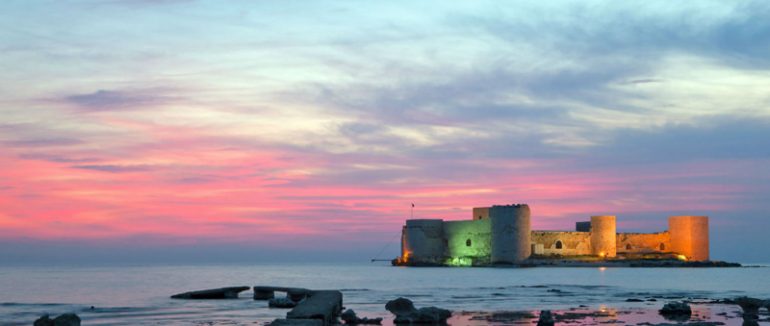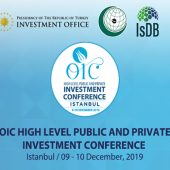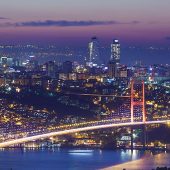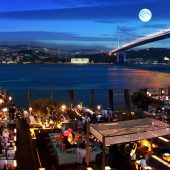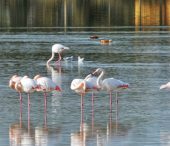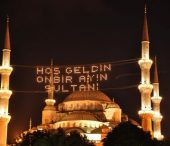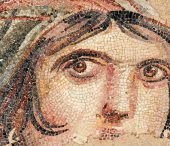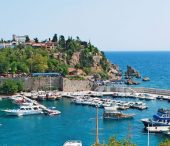This article is about the city of Mersin, see Mersin Province, (named İçel province until 2002), for information about the surrounding area.
Mersin is a large city and a busy port on the Mediterranean coast of southern Turkey and is the capital of the Mersin Province
History
This coast has been inhabited since the 9th millennium BC. Excavations by John Garstang of the hill of Yümüktepe have revealed 23 levels of occupation, the earliest dating from ca. 6300 BC. A fortification was put up around 4500 BC, but the site appears to have been abandoned between 3200 BC and 1200 BC.
Afterward the city was part of many states and civilizations including the Hittites, Assyrians, Persians, Greeks, the Macedonians of Alexander the Great, Seleucids, Lagids. During the Ancient Greek period, the city bore the name Zephyrion (Greek: Ζεφύριον[1]) and was mentioned by numerous ancient authors. Apart from its natural harbor and its strategic position along the trade routes of southern Anatolia, the city profited from trade in molybdenum (white lead) from the neighbouring mines of Coreyra. Ancient sources attributed the best molybdenum to the city, which also minted its own coins.
Then the area became the Roman, province of Cilicia, which had its capital at Tarsus while nearby Mersin was the major port. The city, whose name was Latinized to Zephyrium, was renamed Hadrianopolis for emperor Hadrian.
The Roman Empire split and this area fell into the half ruled from Byzantium (later Constantinople), which became the centre of trade in this part of the world, drawing investments and trade, and causing Mersin to lose its shine.
The city was Christianized early; and was the see of a bishop. Le Quien (Oriens christianus, II, 883) names four bishops of Zephyrium: Aerius, present at the Council of Constantinople in 381; Zenobius, a Nestorian, at the Second Council of Constantinople in 432-434; Hypatius, present at the Council of Chalcedon in 451; and Peter, at the Council in Trullo in 692. The city remains a titular see of the Roman Catholic Church, Zephyriensis; the see has been vacant since 1966. [2]
Then came Arabs, Egyptian Tulunids, Seljuk Turks, Mongols, Crusaders, Armenians, Mamluks, Anatolian beyliks, and finally the city was conquered by the Ottomans in 1473.
During the American Civil War, the region became a major supplier of cotton to make up for the high demand due to shortage. Railroads were extended to Mersin in 1866 from where cotton was exported by sea, and the city developed into a major trade center. By 1900, the Catholic Encyclopedia reports the city having about 18,000 inhabitants, of whom 8,000 were by ethnicity Greeks, 1,000 Armenians, and 2,000 Roman Catholics; the remaining approximately 9,000 inhabitants were presumably Muslim. The Roman Catholic parish of Mersin was administered by Capuchins; there were also Sisters of St. Joseph of the Apparition; schools for boys and girls, and hospitals.
In 1918 Mersin was occupied by French and British troops in accord with the Treaty of Sevrès. It was liberated by the Turkish army in 1920. In 1924, Mersin was made a province, and in 1933, Mersin and İçel provinces were joined to form the (greater Mersin) İçel province.
Up until the 1970s Mersin had a population of 580,000 and a classy feel to it, with carriages parading under palm trees. The seafront was all orchards of oranges and lemons, perfect for a quiet stroll, and you could play on the beach. The heart of this tree-lined bourgois establishment were the patisseries along Flamingo road, a name that evokes nostalgia among those who lived here through the 60s and 70s.
Mersin today
Today Mersin is a large city spreading out along the coast, with Turkey's second tallest skyscraper, huge hotels, an opera house, expensive real estate near the sea or up in the hills, and many other modern urban amenities, although still nothing like the long-established nightlife and culture of Istanbul or Izmir.
The municipality is now trying to rescue the sea front with walkways, parks and statuary, and there are still palm trees on the roadsides especially where the young generation like to hang out in the cafes and patisseries of smart neighbourhoods such as Pozcu or Çamlıbel. These are established neighbourhoods where there are many well-known shops and restaurants with years of experience and reputations to protect. The city centre is a maze of narrow streets and arcades of little shops and cafes, with young people buzzing around on scooters. The old quarter near the fish market is where you will find the stalls selling tantuni and grilled liver sandwiches.
One of the most distinctive features of the city as a whole is the solar heating panels, they are everywhere, on top of every building. Turkey now plans to construct its first nuclear power plant in the port city of Mersin. In March 2008, Turkey opened bidding for the construction of the plant. Environmental groups, such as Greenpeace, oppose this plan.
Cuisine
The local cuisine includes: kebab of course but especially the hot sandwich of grilled meats wrapped in flat bread called tantuni; the home-made sausage bumbar; carrot helva (cezerye); karsambaç (a kind of ice slush); künefe a baked cheese pastry (known throughout south-east Turkey including Mersin); and kerebiç, a semolina pudding, especially made in the month of Ramadan, and many other local soups and stews. The traditional drink of this corner of Turkey, including Mersin, is şalgam suyu (the water used to pickle turnips in).
Economy
The port is the mainstay of Mersin's economy. There are 45 piers, a total port area of 785 km² (205 acres), with a capacity of 6,000 ships per year.
Adjacent to the port is Mersin Free Zone established in 1986, the first free zone in Turkey, with warehouses, shops, assembly-disassembly, maintenance and engineering workshops, banking and insurance, packing-repacking, labelling and exhibition facilities. The zone is a publicly owned center for foreign investors, close to major markets in the (Middle East, North Africa, East and West Europe, Russian Federation and Central Asia. The trading volume of the free zone was USD 51,8 billion in 2002.
Mersin has highway connections to the north and east, and is also connected to the southern railroad. Adana airport is 69 km (43 miles).
70% of the male population and 46% of the female population is employed. Unemployment is about 6.7%
Mersin port is an international hub for many vessels routing to European countries.Its now operated by PSA.
Culture
Because the city has been a crossroads for centuries the local culture is a medley of civilizations. Mersin has a State Opera and Ballet, the fourth in Turkey after Istanbul, İzmir and Ankara. Mersin International Music Festival was established in 2001, and takes place every October. The photography association Mersin Fotograf Derneği (MFD), is one of the most popular and active cultural organizations in the city. There is a great museum in the city centre. The municipal cemetery is interesting as people of all faiths and denominations can be buried here.
In order to swim in clean water you need to get out of town, perhaps an hour along the coast. The beach at (109km beaches) Kızkalesi, Ayaş,Soloi,Susanoğlu is popular with families while young people prefer Akyar,Yapraklı koy,Narlıkuyu or quieter bays along the coast, some of which are very attractive indeed.

